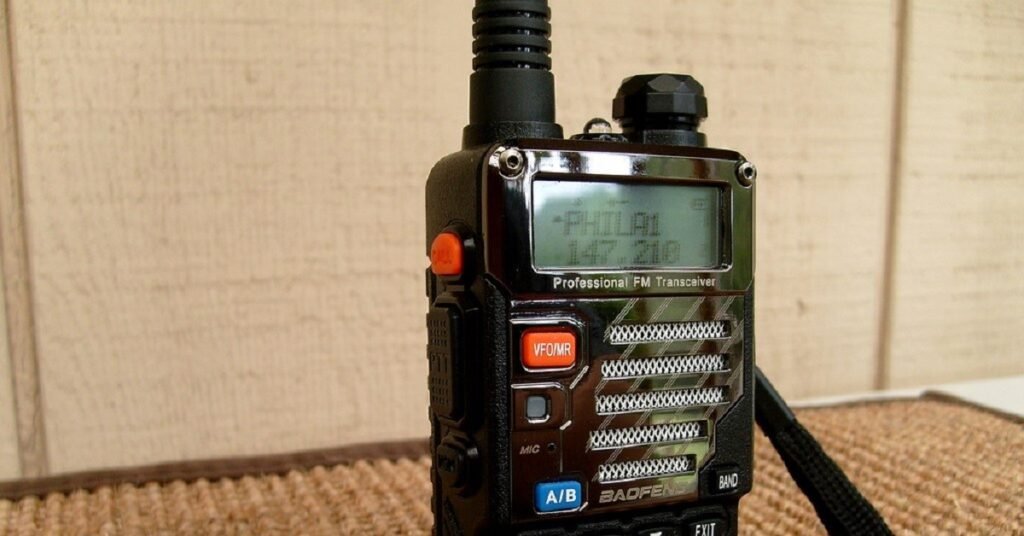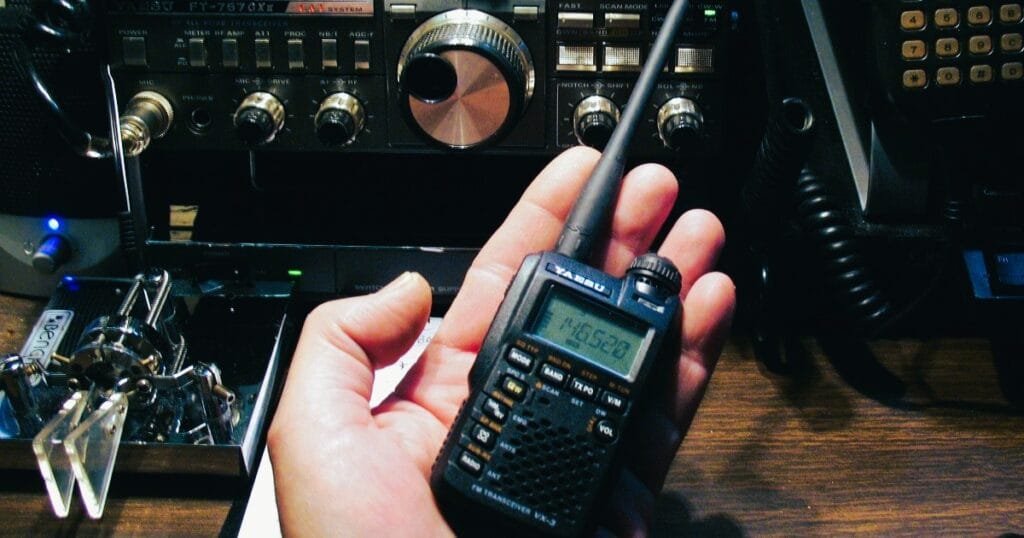Table of Contents
ToggleUnlocking the Airwaves: How to Find Your Ham Radio Frequency List
So you’ve got your sparkling ham radio set up and are ready to explore the enormous universe of frequencies. But, wait! Where can you find a radio frequency list of frequencies to get started? Navigating the airwaves without a frequency list might be like searching for riches without a map. But don’t worry, this article will teach you precisely how to unlock the frequencies you need and tune in to the correct stations.
Whether you’re an experienced operator or a beginner, having a dependable ham radio frequencies list is crucial. From scanning local repeaters to investigating foreign bands, this list can help you communicate clearly and successfully. In this post, we’ll go over many tools to help you select or construct your own unique frequency list.
Radio Frequency List Basics: Your Radio Manual
Before you begin your endless web searches, start with the basics: your radio’s handbook. Every radio comes with a handbook, which is often disregarded yet contains some of the most useful information. Manufacturers often supply not just operating instructions for your instrument, but also a basic ham radio frequencies list specific to your model. This list will frequently include regularly used frequencies or recommendations on where to discover local frequencies in your area.
Handbook mislaid? Not to worry, Nearly all manufacturers offer digital files online. When you search for your radio’s model number, you will most likely discover a downloaded PDF version of the manual. This might be your first step in determining the appropriate frequencies to begin transmitting.
Key Information in Manuals
Many manuals will also show you how to configure your radio manually or with software, which is very useful if you want to add custom frequencies to your list. They may also supply information on the device’s pre-programmed default frequencies, which will serve as a solid foundation for your ham radio frequency list.
The Internet: A Goldmine of Radio Frequency List

When your radio handbook doesn’t provide the frequencies you’re looking for, the internet is your best friend. There are various websites dedicated to amateur radio that provide comprehensive frequency listings for all locations and radio kinds.
RadioReference.com and QRZ.com
Websites like RadioReference.com and QRZ.com are well-known for their extensive frequency listings. These websites allow you to filter results by geography, radio bands, or specific equipment types, making it simple to create a ham radio frequencies list that is tailored to your needs. Whether you’re looking for local, national, or even worldwide frequencies, these sources have you covered.
These sites usually use community-generated data, thus the listings are constantly updated with the most recent information. This is very useful for finding active repeaters and public service bands in your vicinity.
HamCall and RepeaterBook
HamCall and RepeaterBook are two other excellent tools for compiling your ham radio frequency list. Both of these websites focus on repeaters, which are essential for increasing the range of your ham radio. By scanning their directories, you may identify repeater frequencies for your city, state, or nation. These tools are especially handy while traveling because they allow you to rapidly adjust your frequency list to new places.
Frequency Scanner Software: Quick Radio Frequency List

For more tech-savvy radio operators, frequency scanner software can be a valuable tool. These tools let you to download, edit, and upload frequency lists straight to your ham radio. The program frequently has built-in frequency databases, saving you the time and effort of looking for them manually.
Want to learn more about frequencies? Click here to find out more.
Popular Software for Frequency Management
Chirp: Chirp is one of the most popular frequency management programs, allowing users to simply upload and alter frequency lists. It supports several models and manufacturers, making it a versatile option. It also allows you to get frequency information from web databases.
RT Systems: Another fantastic alternative is RT Systems, which provides a more user-friendly interface for configuring radios. This program has preset ham radio frequency lists for numerous places and circumstances, ranging from local repeaters to international shortwave bands.
With one of these software solutions, you can keep your radio up to date with the most appropriate frequencies for your region and preferences.
Local Repeater Directories: Your Community Connection
If you rely on repeaters for long-distance communication, finding a local repeater directory should be a top priority. These directories provide a full ham radio frequency list for repeaters in your region, including information on input and output frequencies, offsets, and tones.
Why Repeaters Are Important
Repeaters are simply relay stations that receive your radio signal and send it out across a larger region. Without them, your ham radio’s range is restricted to a few kilometers. Repeaters allow you to traverse long distances, making them important instruments for emergency communication or ordinary ham radio use.
Repeater directories are accessible both online and in print from ham radio groups or clubs. In addition to websites like RepeaterBook, your nearby amateur radio club may have local directories.
Curious about radio repeaters? Click here to learn more about amateur radio repeaters, including their types, setup, coverage, and top brands.
Amateur Radio Clubs: Where the Pros Hang Out
Joining an amateur radio club might be one of the most effective methods to obtain an accurate and up-to-date ham radio frequency list. Clubs frequently keep their own frequency databases, which are shared with members. These lists are often more extensive than those found online, as they contain local knowledge about active frequencies and repeater locations that may not be publicly known.
Learning from Experienced Operators
Clubs are also an excellent opportunity to meet other radio enthusiasts, who may exchange insights, troubleshooting help, and even personal frequency lists. Seasoned operators frequently maintain lists of specialty frequencies, such as those for digital modes, satellite communication, or emergency services. They may also assist you arrange your radio to function flawlessly with these frequencies.
Joining a local club provides you with a crucial support system of experienced ham operators, ensuring that your list of ham radio frequencies is constantly up to date and dependable.
ARRL Publications: The Ham Radio Bible

The American Radio Relay League (ARRL), recognized as the foremost authority in the realm of amateur radio across the United States, provides an extensive range of manuals and handbooks that cater specifically to various radio frequencies. Their comprehensive resources are designed to assist both novice and experienced operators in understanding and utilizing different frequency bands effectively. Their publications, like the ARRL Repeater Directory, are essential for anybody serious about amateur radio.
What You Can Find in ARRL Publications
These are guides to all the usual repeater freqs around the USA, and a good guide for suggesting as many scanning techniques or digital resources you might find along w/ help show them. This information is constantly being refreshed so you can always be in-the-know. The ARRL also discusses different ham radio bands and special interests such as satellite communications, along with complete lists of frequencies for each band used by the ham community.
So, these ARRL publications will be considered the “bible” of amateur radio and could be easily one purchase away from having a critical resource for anything ham radio (including frequencies).
Social Media and Forums: The Crowdsourced Approach
You would not think of social media while looking for a list of ham radio frequencies, but platforms like Facebook, Reddit, and dedicated ham radio forums are goldmines for this type of information.
Crowdsourcing Frequency Information
Many ham radio communities on Facebook and Reddit allow operators from all over the world to share frequency lists and ideas on how to discover active bands. These forums provide a more conversational approach to learning about new frequencies and trends in amateur radio.
The advantage of using social media and forums is that the information is current and user-generated. You may ask a query, and other operators may respond in minutes with updated frequency lists or even assist troubleshoot your radio setup. You’ll also find innumerable examples of operators discovering new and intriguing frequencies via trial and error, which you may add to your personal list.
Check out this guide for a better understanding of the radio frequency chart.
Trial and Error: Discovering Hidden Gems
One of the most exciting features about amateur radio is the ability to find new frequencies on your own. While a solid ham radio frequency list is vital for everyday usage, don’t be afraid to scan the bands and explore.
The Joy of Scanning Radio Frequency List
Most ham radios have built-in scanning capabilities, allowing you to explore the airways and locate frequencies that are not mentioned in directories. You can come across discussions, broadcasts, or emergency messages that are not on your normal list. This is how many ham radio operators find up expanding their personal ham radio frequency list—by just exploring the unknown.
Some of the finest ham operator stories include serendipitous discoveries, such as scanning and hearing a far-off broadcast from a foreign nation or an emergency warning requiring quick help. These moments capture the pure essence of ham radio and demonstrate how big the universe of frequencies can be.
Final Thought
Finding and maintaining a thorough ham radio frequency list may appear difficult at first, but with the appropriate resources and a little patience, it’s easier than you think. There are several methods to stay informed about the airwaves, ranging from just reading your radio’s instructions to employing specialist software.
Remember, the world of amateur radio is huge, and there is always something new to learn. Whether you join a club, go through internet listings, or play with your scanner, each step brings you closer to mastering the art of frequency selection. So get out there, start tuning in, and maximize the possibilities of your ham radio. The airways await you, and with a comprehensive ham radio frequency list in hand, you’ll be prepared for anything.


